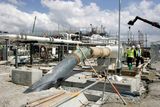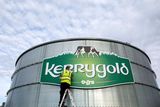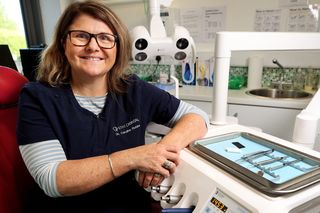EU at 50: Ireland’s love affair with Europe is still going strong – but the potential for even greater success is still huge
Enterprise Ireland
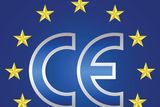
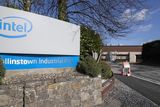
It can often take a landmark anniversary to show us just how far we have come. This year marks 30 years of the European Single Market, along with the 50th anniversary of Ireland joining the European Union.
It’s certainly a moment to recall that before 1993, trading with any other country in Europe involved masses of customs paperwork, currency calculations and other red tape.
The single market came into being when the then 12 EU member states abolished border controls between each other on January 1, 1993.
From then, people, goods, services and capital could move freely between these countries.
The EU plans to be the first climate-neutral continent by 2050 and is undertaking a huge push for renewable energy
Not only could any EU citizen pick up sticks and go to live, study or work in any other member state, which was previously much more difficult, it became much easier for businesses to export within the EU.
The figures tell the story. In 1993, intra-EU trade or trade between the 12 member states was €665bn. In 2021, with 27 member states, intra-EU trade was €3,445bn.
In 1993, trade in services stood at €167bn. In 2019, it was €1,374bn for the EU-28.
The single market has brought us a single currency trading certainty around costs and revenues, a single customs union rather than dealing with multiple tariffs and customs rates, and reduced regulatory barriers.
The EU is striving to break down barriers to a free and open digital marketplace in the region
The CE mark for products such as medical devices or toys, for example, means consumers and businesses can trust in a single European standard, rather than contending with multiple national regulations.
It is, however, a case of ‘a lot done, more to do’.
Read more
This huge trading bloc on our doorstep now includes three markets worth €1bn to Irish exporters – France, Germany and the Netherlands.
The eurozone is now Ireland’s second largest market, accounting for 22pc of all exports from Irish businesses supported by Enterprise Ireland in 2021
The CE mark for products such as medical devices or toys, for example, means consumers and businesses can trust in a single European standard
The €750bn NextGenerationEU recovery package for example aims to make Europe greener, more sustainable and more efficient.
The EU plans to be the first climate-neutral continent by 2050 and is undertaking a huge push for renewable energy.
With ambitious plans for offshore wind already under way, Ireland is well placed to take advantage of this surging market.
Likewise, our strong tech sector is well positioned to make the most of the digital single market, which covers online sales to consumers and businesses.
The EU is striving to break down barriers to a free and open digital marketplace in the region.
Furthermore, with the European Chips Act, the EU is looking to bolster its competitiveness and resilience in semi-conductors. It aims to double its market share by 2030.
Before entering the European market, it’s vital to plan well in advance
With major investment by companies such as Intel and Infineon in Germany and STMicro/ GlobalFoundries in France on foot of this, Irish companies can avail of related opportunities, especially in high-tech construction.
Similar large scale capital investment in France as part of the Ireland France Interconnector illustrates the scale of opportunity across the region.
Before entering the European market, it’s vital to plan well in advance.
It is important to research the size and growth rates of different markets, along with the need for language skills and any available funding.
Intel in Leixlip Co Kildare
Enterprise Ireland has multiple programmes to support companies.
If you’re interested in entering the European market for the first time, get in touch with any of our offices across the region, where our expert market advisers will be happy to help.
Manus Rooney is Country Manager, Germany/Austria/Switzerland, Enterprise Ireland
Read more
Join the Irish Independent WhatsApp channel
Stay up to date with all the latest news




